Trying to eat healthier, stay on track with workouts, or just figure out what’s actually in your lunch? You’ve probably heard of apps like Lifesum, MyFitnessPal, and ReciMe. They all promise to help you hit your health goals, but each one does things a little differently. In this guide, we’ll break down how they work, what they’re best at, and who they’re really for. No tech speak, just straight-up pros and cons so you can pick what works for your life.
Why Food Tracking Still Matters in 2025
Nutrition science has not changed its verdict: consistency beats short-lived enthusiasm. A 2024 meta-analysis from the European Journal of Nutrition showed that people who log meals at least three times a week are twice as likely to maintain weight loss after one year. Whether you want to lose fat, gain muscle or simply eat more veggies, awareness is the first step. Modern apps automate the boring parts – math, grocery lists, portion conversions – so the brain space you once spent counting calories can go toward enjoying your meals.
Quick Intro to the Apps

ReciMe: Nutrition That Starts in Your Kitchen
Cooking at home should feel simple and rewarding, not stressful. That’s why we built ReciMe to solve common frustrations, like searching through screenshots or struggling to organize recipes from TikTok, Instagram, or old websites. With just one tap, you can save any recipe into your personal collection, ready to cook without ads or clutter.
What really sets ReciMe apart from other nutrition apps is how we handle nutritional information. Instead of scanning barcodes from packaged foods, ReciMe calculates nutrition based on the real ingredients in your recipes. This is especially helpful if you prefer cooking at home and want to know exactly what you’re eating. It’s perfect for anyone who wants to eat healthy without relying on processed, store-bought meals.
By focusing on recipe-based nutrition, ReciMe helps you make smarter choices without giving up the foods you love. You can instantly see calories, protein, carbs, and fats, so whether you’re watching macros or just trying to eat balanced meals, you’re always informed. Healthy eating shouldn’t mean boring food or complicated math, and with ReciMe, it doesn’t.

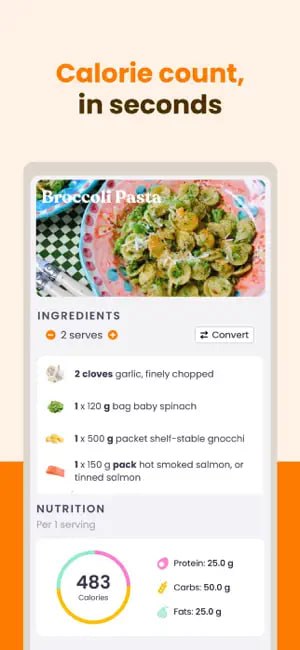
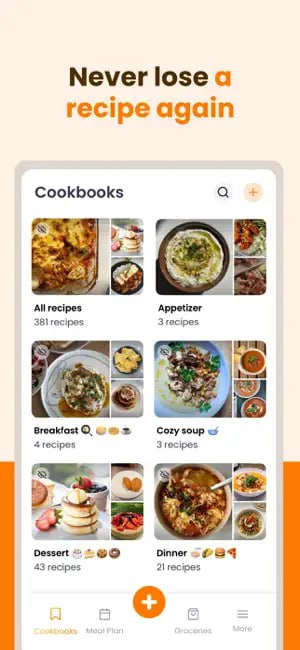
- Nutrition calculator: Tap “Calculate nutrition” inside any saved recipe and see calories, protein, carbs and fat instantly. Great for macro lovers who still want real food instead of plain chicken and rice.
- Smart importing: Grab any recipe from Instagram, TikTok or Pinterest in one tap. Ingredients and steps are cleaned up automatically so you never copy-paste again.
- Meal planner and grocery lists: Drag recipes onto a weekly board, then generate an aisle-sorted shopping list that syncs to iPhone and iPad.
- Cookbooks and cloud sync: Organize by cuisine, diet, meal type or mood. Everything is backed up and searchable in seconds.
The result: less scrolling, fewer tabs, more time sautéing, baking and tasting.
Just try it – you’ll love it:



Lifesum: Habit-Driven Nutrition Coach
Lifesum approaches healthy eating like a marathon, not a sprint. After a quick Life Score quiz it nudges you toward better choices with color-coded food ratings, streak badges and gentle reminders to drink water or hit a step goal. Paired with Apple Health or Fitbit data, those nudges stack into visible progress on weight, energy and mood charts.
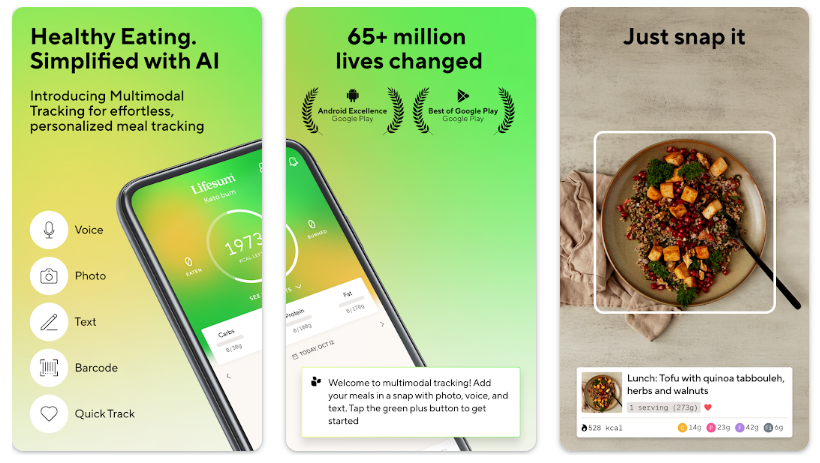
- Multiple diet templates: Keto, Mediterranean, high protein and more.
- Large recipe library: Thousands of dishes behind the premium tier.
- Visual feedback on food quality: Quick good vs treat icons make decoding labels simple.
- Water and step tracking: Stay accountable without juggling extra apps.
Its weakness? Calorie targets often skew low because activity level is not fully factored. Active users usually tweak numbers manually or with a coach.

MyFitnessPal: The Database Giant
If you want an entry for the local bakery’s spinach feta roll, MyFitnessPal probably has it. Nineteen years of crowd-sourcing created a large catalog of foods, from street-cart shawarma to limited-edition protein bars. The sheer volume makes it a lifesaver for travelers, restaurant regulars and anyone with eclectic tastes.
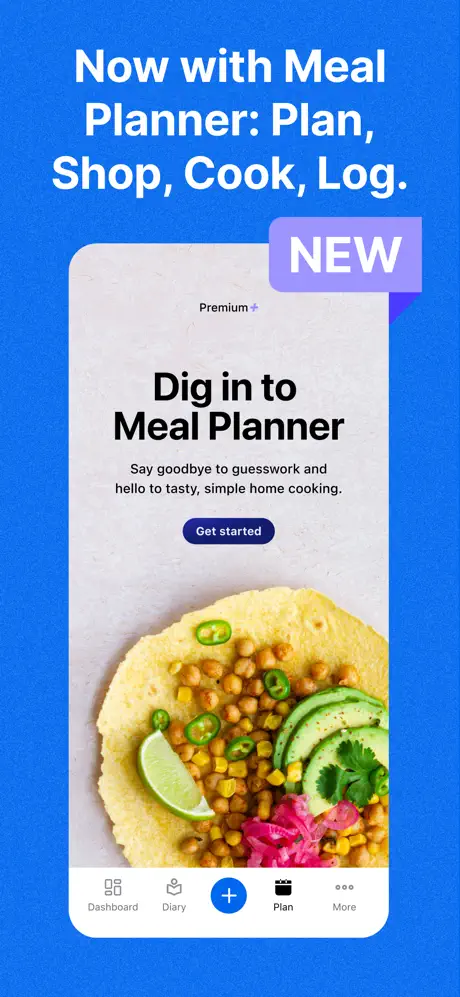

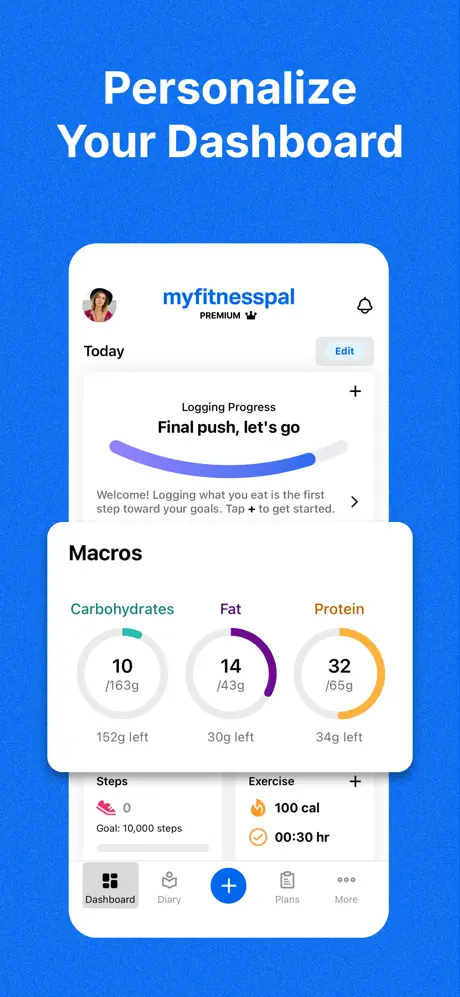
- Big library of foods: Includes restaurant dishes and global items.
- Barcode scanner (premium): Fast logging for packaged foods.
- Basic workout logging and step import: Keep activity and diet in one place.
- Daily macro graphs and community forum: Data at a glance and peer support anytime.
The upside of size is choice; the downside is accuracy. User-generated items can be off by 20 percent, so experienced trackers double-check labels.
Pros and Cons at a Glance
Before we dive any deeper, it helps to see the strengths and weaknesses of each app side by side. Use the table below as a quick reference when you are deciding which tool fits your cooking style, nutrition goals and budget.
| App | Pros | Cons |
| ReciMe | – One tap recipe import from any site or social platform- Built-in nutrition calculator for instant macros- Smart grocery lists sorted by aisle- Cloud sync across iPhone and iPad | – Android app still in development- Day-view calorie tracker arriving later this year |
| Lifesum | – Habit score quiz for personalized goals- Multiple diet templates and large recipe vault- Clear food quality icons (good vs treat)- Integrates with Apple Health and Fitbit- Water and step tracking included | – Default calorie targets can be too low- Most meal plans locked behind premium- No true recipe import from the web |
| MyFitnessPal | – Large database of foods including restaurant items- Tracks extra micronutrients and progress photos- Connects to almost every wearable and fitness app- Lively community and forum support | – Many user entries are inaccurate- Barcode scanner and ad-free view require premium- Highest annual price of the three |
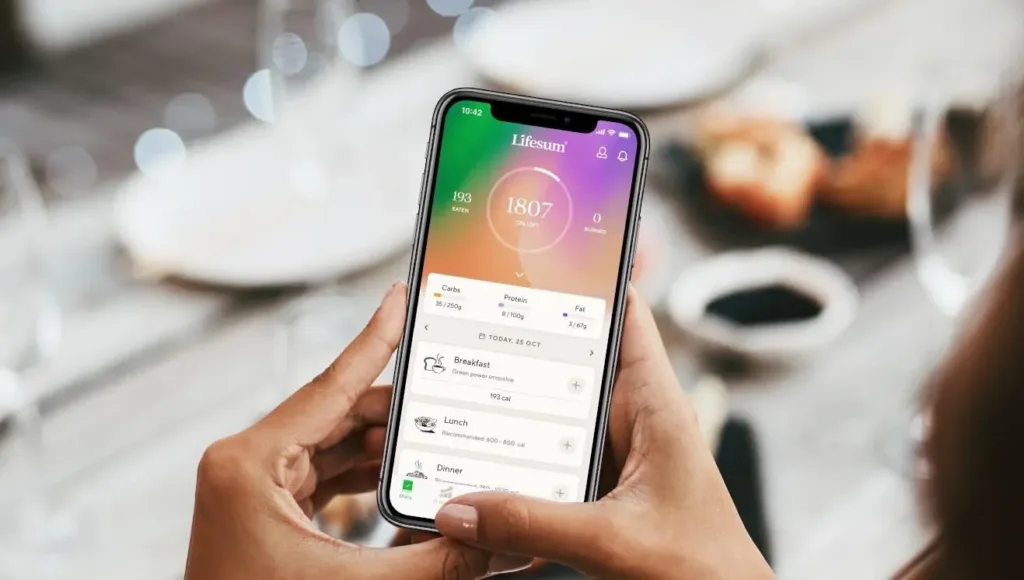
How Each App Performs by Feature
1. Recipe Capture and Organization
- ReciMe imports from any link or social post, preserves images and lets you file recipes into custom cookbooks. You can also upload PDFs, photos or plain text.
- Lifesum offers only in-house recipes; you cannot save random web finds.
- MyFitnessPal stores recipes by pasting URLs, but parsing sometimes fails and manual edits are needed.
2. Nutrition Data and Accuracy
- ReciMe calculates macros from ingredient lists and lets you scale servings to fit calorie targets.
- Lifesum provides nutrition only for its own recipe catalog. Packaged meals must be entered by search or barcode.
- MyFitnessPal shines for unusual restaurant meals but requires vigilance. Verified green-tick items are safe; user entries need cross-checks.
3. Meal Planning and Grocery Support
- ReciMe auto-builds grocery lists, sorts by aisle and supports multiple stores. Tap to cross off items while shopping.
- Lifesum gives meal plans within the app, but shopping lists are static PDFs. No aisle sorting.
- MyFitnessPal has no native grocery module; users rely on third-party integrations or pen and paper.
4. Calorie and Macro Tracking Depth
- ReciMe is recipe-centric first, tracker second. You can log the full meal in one tap.
- Lifesum tracks calories, protein, carbs, fat, sodium and potassium. Premium unlocks custom macro splits and exercise-calorie toggles.
- MyFitnessPal records more micronutrients, supports exercise calories in the free tier, but granular macro goals require premium.
5. Habit Building, Coaching and Motivation
- ReciMe focuses on environment design: organize recipes you love so you cook at home more often.
- Lifesum includes daily reminders (“log breakfast”, “drink water”) and awards Life Score points for consistency.
- MyFitnessPal offers streak badges and large forums for peer support.
Side-by-Side Feature Comparison
| Feature | ReciMe | Lifesum | MyFitnessPal |
|---|---|---|---|
| Recipe import | One-tap import from web or social media | Not supported | Limited support via URL paste |
| Built-in recipe nutrition calculator | Yes, calculates from ingredients | Only for in-app recipes | Yes, but accuracy varies for user entries |
| Grocery list builder | Yes, sorted by aisle and recipe | Static PDFs, no aisle sorting | No native grocery feature |
| Calorie & macro tracking | Per full recipe, not individual foods | Calories, macros, some micronutrients | Macros and many micros, detailed charts |
| Custom meal plans | Manual via drag-and-drop board | Provided via in-app templates (mostly Premium) | No dedicated meal planning |
| Barcode scanning | No | No | Yes (Premium only) |
| Fitness and step tracking | No | Yes (syncs with Apple Health and Fitbit) | Yes (syncs with many devices) |
| Habit coaching | Indirect (via organization and planning) | Yes, with reminders and Life Score | Streaks, badges, community motivation |
| Platform support | iOS, Chrome extension, Android coming soon | iOS, Android | iOS, Android, |
Habits are personal. Some people thrive on badges, others on tasty leftovers. Pick the style that nudges you without feeling preachy.
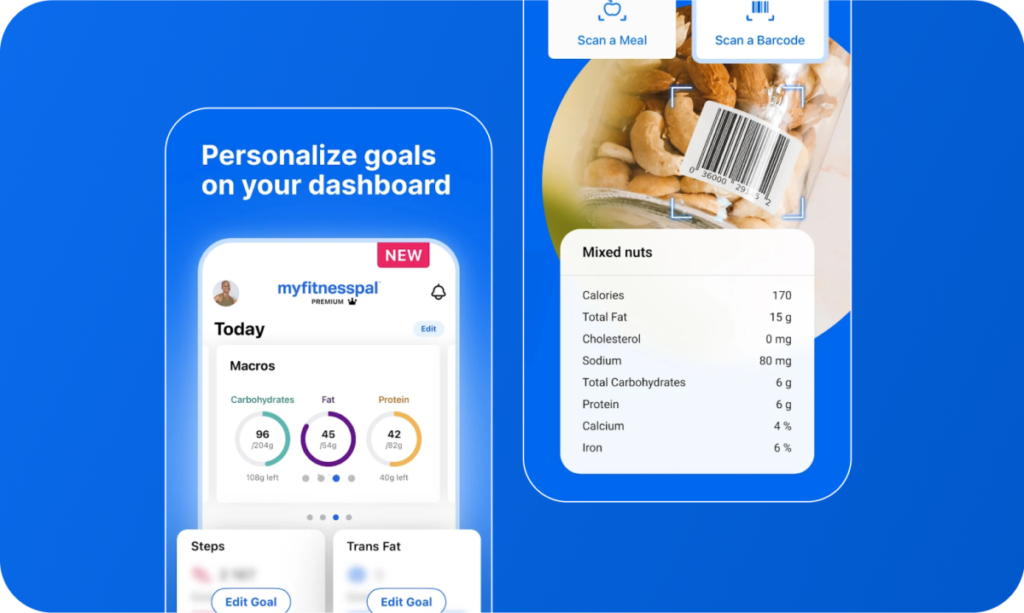
Using the Apps in the Real World
Busy Parent Cooking for Four
Weeknights are chaos. With ReciMe we batch-import five meal ideas on Sunday, auto-generate a list and shop once. Lifesum’s preset plans are solid but lack family portion scaling. MyFitnessPal means separate entry for every item on spaghetti night.
Result: ReciMe saves two hours a week.
Fitness Enthusiast Cutting for Summer
Macros matter. They log weighed chicken, oats and supplements. MyFitnessPal tracks sodium and iron levels in detail. ReciMe’s nutrition beta works but covers only recipe calories, not custom single foods. Lifesum’s calorie goal is 200 kcal too low until manually fixed.
Result: MyFitnessPal edges ahead for hardcore macro tracking.
Beginner Cook Learning to Love Veggies
They feel lost in the kitchen and bored by plain salads. Lifesum’s in-app recipes deliver simple, balanced dishes. ReciMe counters with unlimited import from TikTok chefs plus our step-by-step cooking mode that keeps the phone awake. MyFitnessPal offers recipes too but many hide behind premium and lack photos.
Result: Tie between ReciMe (variety) and Lifesum (built-in structure).
Final Verdict
Helping people eat better is about removing friction. ReciMe tackles the root problem: recipes scattered across screenshots, bookmarks and notebooks. By unifying capture, planning, nutrition and shopping, we shrink decision fatigue so you actually cook the food you crave.
Lifesum shines when you want structured guidance and gentle nudges. MyFitnessPal is a powerhouse for data lovers who thrive on big numbers and community boards.
Bottom line: choose the app that aligns with your daily habits, not just the one with the longest feature list. If you spend more time scrolling than sautéing, give ReciMe a spin. Your dinners – and your health – will thank you.
Frequently Asked Questions
Which app is best for tracking macros and calories?
MyFitnessPal is the most detailed for macro tracking, especially for users who want to monitor micronutrients and upload progress photos. Lifesum gives decent tracking but often underestimates calorie needs. ReciMe focuses more on full-meal nutrition through recipes.
Can I import recipes from the web or social media into these apps?
Only ReciMe offers true one-click importing from Instagram, TikTok, Pinterest, blogs, and more. MyFitnessPal has limited recipe saving from URLs. Lifesum does not support importing recipes from external sources.
Which app is better for building healthy habits?
Lifesum is designed around habit-building, with daily goal tracking, a “Life Score” quiz, and reminders for water, meals and steps. ReciMe helps indirectly by making meal planning and grocery shopping easier. MyFitnessPal offers streak tracking and community forums for motivation.
How accurate is the nutrition information in these apps?
ReciMe’s calculator provides solid accuracy for full recipes. Lifesum verifies some foods but can still have gaps. MyFitnessPal has the largest database, but many entries are user-generated and may be inaccurate, so manual checking is recommended.
